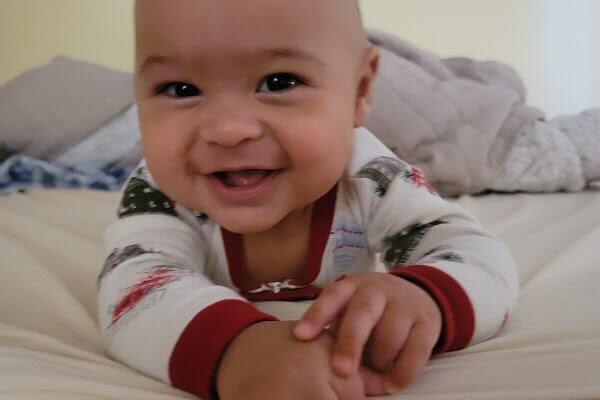Drooling, crying, 2 a.m wake-up calls. Those sleepless nights might feel like a throwback to the infant days—but they might be a sign that your baby is teething.
Trouble is, teething can be tough to pick out before your baby’s teeth actually sprout—which can happen any time between three and 12 months, says Chicago-based pediatrician, Reily Minster, M.D.
One big clue: “Before the first tooth erupts, your baby will usually drool and mouth or chew objects like crazy—a trusting sign that the teething stage has begun,” Minster says. “It sounds counter-intuitive, but chomping down on something can actually help relieve gum tenderness.”
Other tell-tale signs are waking up in the middle of the night and eating less (due to gum sensitivity). Ear-pulling could be a teething hint, too, but it isn’t always a dead giveaway. That’s because all babies start pulling on their ears around four months, just because they’ve finally discovered them (cute, right?). But ear-pulling might also be a way for your baby to cope with the pain of her growing teeth.
What can you do to ease your little one’s dental discomfort? Plenty, Minster says. Here’s three tools to keep in your arsenal:
Gum-soothing teethers
Your baby’s own fingers might actually the perfect teethers (don’t you love an easy solution?): Warm, waterproof, and soft on the outside and firm on the inside. If it seems like she wants something cold, though, try a water-filled teether that you can chill in the fridge.
One to try: Bright Starts 3-Piece Chill and Teethe Teether Tubes Pack,$3.99. Read what other parents said about this product.
Gum-numbing gels
Steer clear of gum-numbers containing benzocaine, a local anesthetic that the FDA recently linked to reduced oxygen in the bloodstream. “These can easily be overdosed by accident and could numb a baby’s gag reflex,” says Minster.
Instead, try a benzocaine-free version, like BabyGanics Benzocaine Free Gel Teething Pods, which is made with all-natural ingredients and is benzocaine-free. Or go the DIY route: Freeze a wet washcloth in a ziplock bag, and let your baby chew it while it defrosts. Easy peasy.
Pain relievers
Acetaminophen (like Infants’ Tylenol) is safe for teething pain and should give your tot (and you) a few hours of peace. Like with all medications, check with your child’s pediatrician for proper dosage instructions.
Teething can be painful for both baby and you. Here’s how to spot it plus tips on easing your child’s discomfort.



